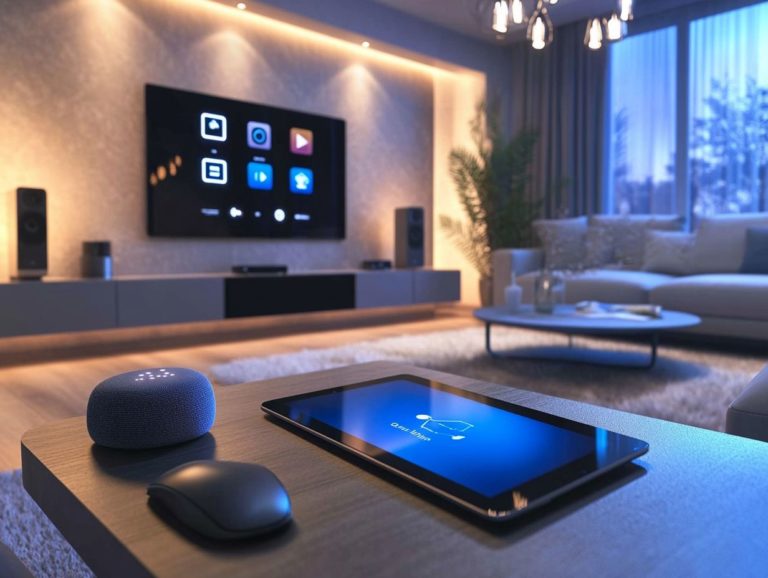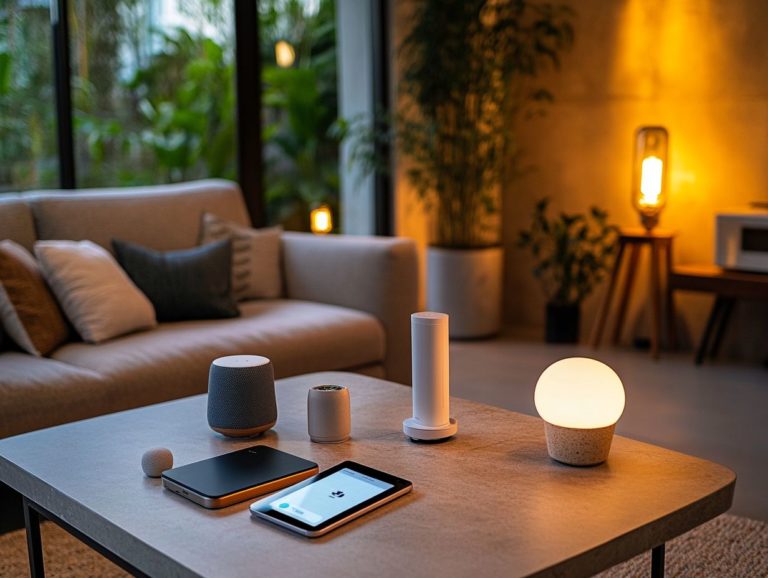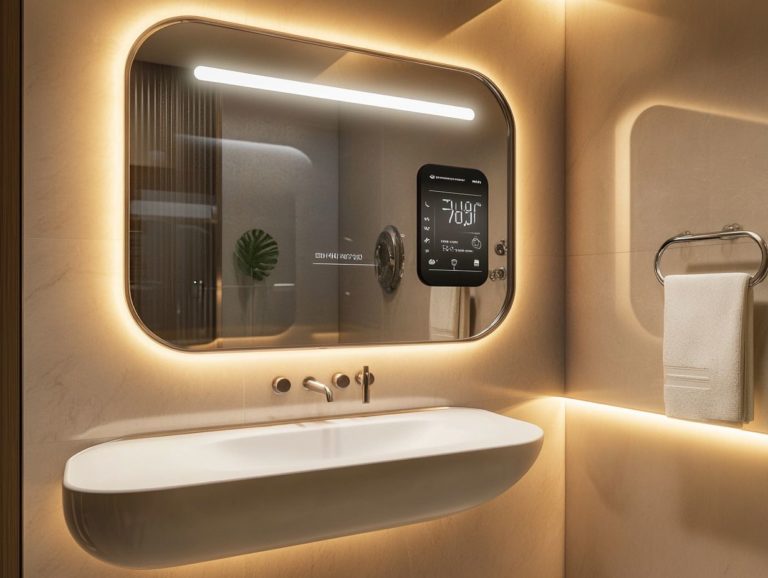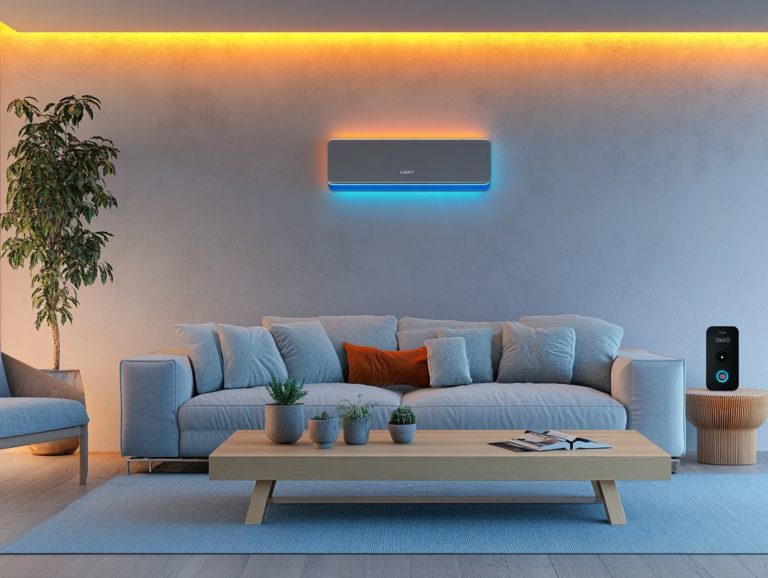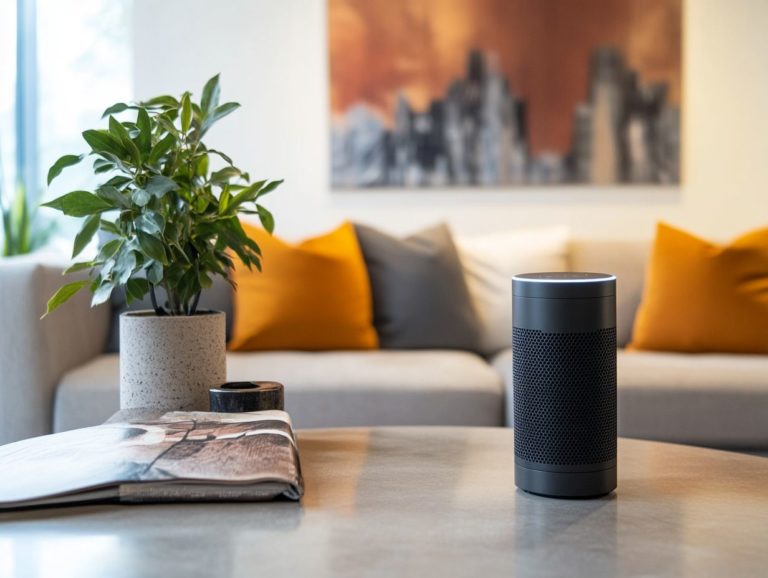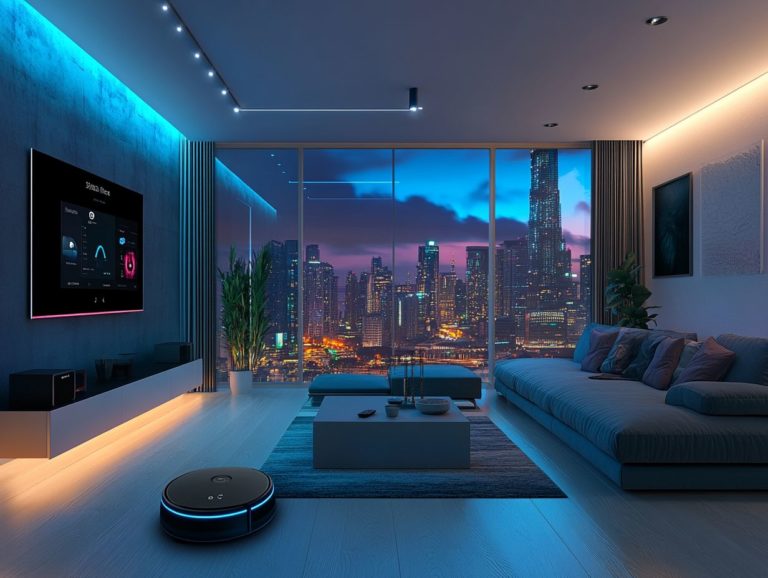Choosing the Right Smart Home Assistant
Smart home assistants are changing how you interact with technology. They blend convenience and intelligence into your daily routine.
With a plethora of options at your fingertips, how do you select the one that perfectly aligns with your needs?
This guide delves into essential features you should consider, highlights popular brands currently dominating the market, and offers insights on how to set up your assistant effectively. It also provides common troubleshooting tips to ensure everything operates smoothly.
Uncover the perfect smart home companion that fits your lifestyle today!
Contents
- Key Takeaways:
- Features to Consider when Choosing a Smart Home Assistant
- Popular Smart Home Assistants on the Market
- Factors to Consider for Your Specific Needs
- Integration with Smart Home Systems
- How to Set Up and Use Your Smart Home Assistant
- Troubleshooting Common Issues
- Frequently Asked Questions
- What is a smart home assistant?
- Why should I consider choosing a smart home assistant?
- What are the different types of smart home assistants available?
- How do I choose the right smart home assistant for my needs?
- Can I control my smart home assistant with my smartphone?
- What are the privacy concerns with using a smart home assistant?
Key Takeaways:
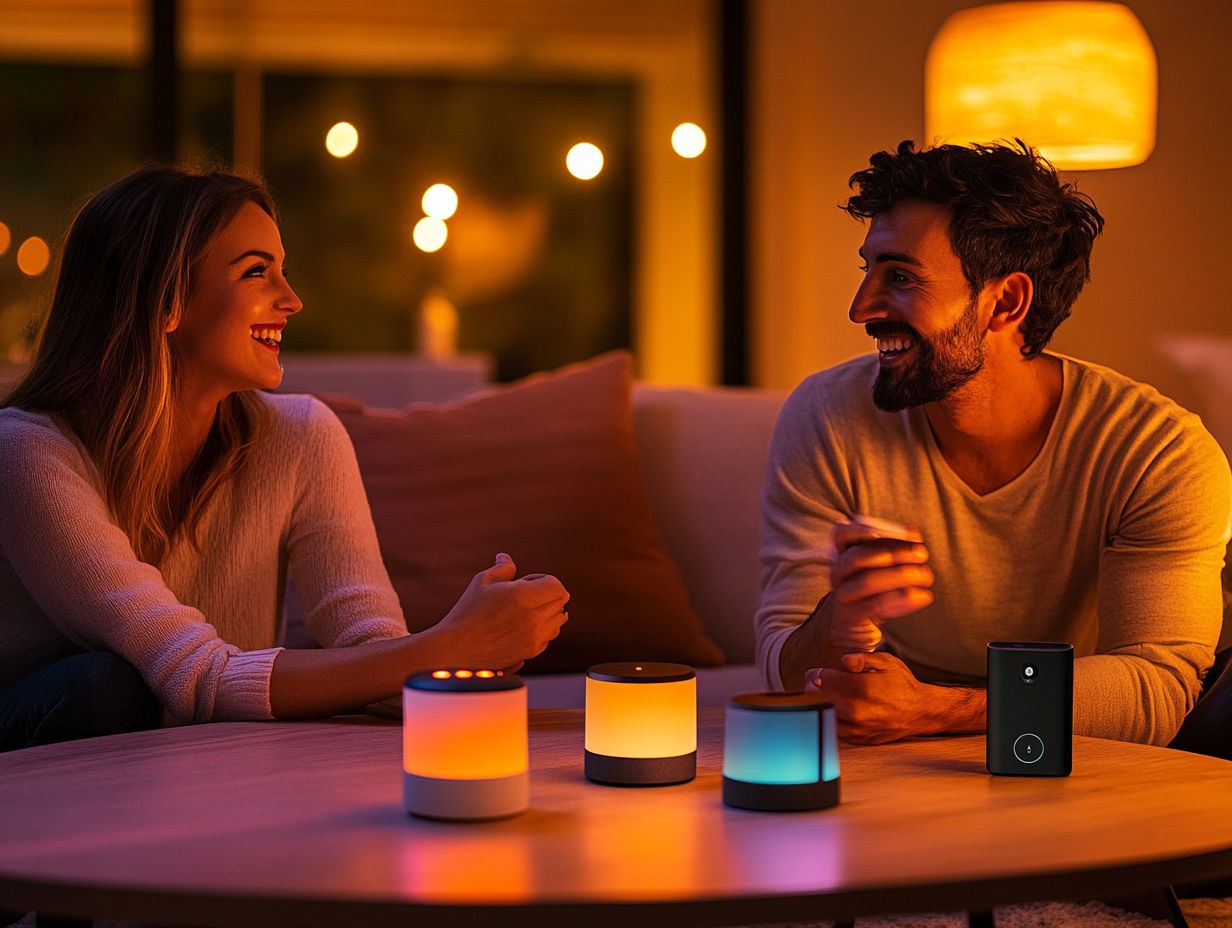
- Consider voice control for hands-free device management.
- Ensure compatibility with various devices for a fully integrated experience.
- Prioritize privacy and security to protect your personal information.
What are Smart Home Assistants?
Smart home assistants are your gateway to seamless home automation. They elevate your lifestyle through effortless voice control and integration with various smart platforms. Devices like Apple Home, Google Home, and Amazon Alexa give you the power to manage your smart gadgets with ease, enhancing your overall experience and promoting the adoption of smart home technology.
By leveraging advanced algorithms and machine learning, these assistants can communicate with an impressive array of devices from smart lights to thermostats ensuring everything is synchronized and responsive. Imagine simply instructing your assistant to set a morning routine, gradually brightening the lights as your coffee brews. It’s that effortless!
Platforms like Samsung SmartThings and Home Assistant further streamline this integration, allowing you to customize your home environment with precision. As you configure different scenes and automation tasks, you ll quickly see the versatility of these assistants, transforming your everyday life into a streamlined, efficient experience.
Features to Consider when Choosing a Smart Home Assistant
Selecting the ideal smart home assistant requires a thoughtful evaluation of several key features. Consider voice control capabilities, device compatibility, privacy and security measures, and the overall user experience. For more insights, check out this guide on how to choose smart home devices. Each of these elements plays a vital role in crafting a cohesive smart ecosystem.
By focusing on these features, you can ensure that your smart home solutions align perfectly with your unique needs and preferences.
Voice Control Capabilities
Voice control capabilities are a cornerstone of your smart home experience. They enable you to interact seamlessly with your devices using natural language through smart speakers and displays.
These features not only simplify your daily tasks but also enhance the overall efficiency of managing various household gadgets. You can easily adjust the lighting, control the thermostat, or play your favorite music all with just your voice, elevating your convenience to a new level.
By integrating voice assistants like Amazon Alexa and Google Home, you can create tailored routines that automate your environment. This level of control over your smart devices fosters a more synchronized and engaging home experience, ultimately leading to greater satisfaction and a more streamlined lifestyle.
Compatibility with Other Devices
Device compatibility is key when choosing a smart home assistant. It dictates your ability to control a variety of smart devices, including lights, thermostats, and locks, along with Zigbee and Z-Wave devices. Zigbee and Z-Wave are communication protocols that allow smart devices to connect and talk to each other.
Without reliable integration, you could find yourself unable to utilize your devices to their fullest potential, resulting in a disjointed and frustrating experience. Imagine how seamless it would be with a smart assistant that effortlessly connects with Philips Hue lights, August smart locks, and Ecobee thermostats.
This kind of synergy creates a cohesive smart ecosystem that enhances functionality like setting the perfect lighting and temperature just as you arrive home and streamlines your daily routines through automation.
Therefore, ensuring that your chosen assistant is compatible with a wide range of devices is essential for unlocking the full benefits of a connected home.
Privacy and Security

When selecting a smart home assistant, make privacy and security your top priorities. These devices frequently collect personal data and connect to various smart home solutions.
This directly influences your home s security.
It’s crucial to familiarize yourself with the privacy and security measures available to safeguard your personal information. Many smart home assistants use advanced encryption methods to protect data transmission.
Clear data management rules dictate how your data is handled, stored, and shared, promoting transparency in practices. You can customize your privacy settings to determine what information is accessible and which features you want to enable or disable.
This not only enhances your home security but also gives you a sense of control over your digital life.
Popular Smart Home Assistants on the Market
The market for smart home assistants is diverse and competitive, presenting you with a variety of popular options like Apple Home, Google Home, Amazon Alexa, and Samsung SmartThings.
Each of these devices brings unique features that enhance your home automation experience. They cater to a range of user needs and preferences, paving the way for efficient management of your smart home.
Comparison of Top Brands
When you compare top smart home assistants like Apple Home, Google Home, Amazon Alexa, and Samsung SmartThings, it becomes clear that each brand has unique strengths and weaknesses tailored to fit various user preferences.
For example, Apple Home emphasizes robust privacy features and seamless integration within the Apple ecosystem, making it an ideal choice for loyal users.
Conversely, Google Home stands out with its advanced voice recognition capabilities and access to an extensive array of services, significantly enhancing interaction and engagement.
Amazon Alexa boasts a wide selection of compatible smart devices and third-party skills, allowing for extensive customization perfect for anyone looking to create a fully automated home environment.
Meanwhile, Samsung SmartThings excels in compatibility across different brands and devices. This simplifies the management of your diverse smart gadgets from a single central hub.
These features reveal the focus of each assistant and their suitability for different living scenarios, whether you re a tech-savvy enthusiast or someone who prioritizes privacy and simplicity.
Factors to Consider for Your Specific Needs
When choosing a smart home assistant, consider key factors that fit your specific needs.
Think about your budget, personal preferences, and how seamlessly you want the assistant to work with your existing smart home systems.
By carefully weighing these considerations, you’ll be well-equipped to select the assistant that aligns with your home automation aspirations.
Budget and Personal Preferences
Understanding your budget and personal preferences is essential when selecting a smart home assistant, as these elements directly shape the range of smart home solutions at your fingertips.
If you’re working with a limited budget, you’ll likely find enticing entry-level devices that offer the fundamental features you need, laying a strong groundwork for your smart home without straining your finances.
Conversely, if you’re ready to invest more, you can explore premium options that not only provide advanced functionalities but also showcase stylish designs that complement your home decor.
Your preferences matter greatly in this decision-making journey, as you may prioritize aesthetics, ease of use, and specific capabilities that resonate with your lifestyle.
Striking the right balance between budget and personal taste will ultimately define your smart home experience, ensuring it aligns perfectly with your vision of a modern living space.
Start exploring your options today and find the perfect assistant for your smart home!
Integration with Smart Home Systems

When considering a smart home assistant, integration with your existing smart home systems is paramount. This factor directly influences how effectively the assistant communicates with your smart devices.
A well-integrated smart home ecosystem makes your life easier and elevates your entire setup’s functionality. By connecting devices like thermostats, security cameras, and lighting systems, you can create automated routines that work seamlessly!
Your integration options are plentiful. You can utilize protocols like Zigbee and Z-Wave or platforms such as Google Home and Amazon Alexa. These allow for convenient voice commands and remote control, enhancing your experience.
The benefits of integration are significant: improved energy efficiency, heightened security, and the ability to customize your smart environment to reflect your preferences.
How to Set Up and Use Your Smart Home Assistant
Setting up your smart home assistant is straightforward. Follow a step-by-step guide for successful integration with your smart devices and automation tasks.
This process generally involves configuring device management options and personalizing voice commands to enhance your overall experience.
Step-by-Step Guide
Setting up your smart home assistant involves connecting the device to your home network and linking it to compatible smart devices.
Start by ensuring your Wi-Fi network is operational; a stable connection is crucial. Once your device is powered on, follow the on-screen prompts to connect it to your network.
Next, integrate compatible devices such as smart lights, thermostats, and security cameras. This is usually done through their respective apps or the smart home assistant’s interface.
Explore personalization options that allow the system to learn your preferences and routines. This way, it can adjust settings according to your lifestyle, providing a truly customized experience.
Troubleshooting Common Issues
Troubleshooting common issues with your smart home assistant ensures smooth operation and elevates your experience.
Familiarize yourself with typical technical problems and effective resolution strategies. By understanding these challenges, you can maintain optimal functionality in your smart home ecosystem and enjoy seamless convenience.
Tips for Resolving Technical Problems
When you encounter technical issues with your smart home assistant, implementing effective troubleshooting tips can enhance device management and resolve problems swiftly.
Common issues include connectivity problems, software glitches, and compatibility conflicts with other smart devices. Start by ensuring your assistant is connected to a stable Wi-Fi network; poor connectivity can delay responses or cause commands to fail.
Regularly updating the device’s firmware helps ward off bugs that might disrupt performance. If issues persist, consider resetting the device to factory settings as a last resort; this often restores functionality.
By taking these steps, you can optimize your experience and enjoy the convenience your smart home assistant is designed to provide.
Check out this helpful video to see your smart home assistant in action!
Frequently Asked Questions
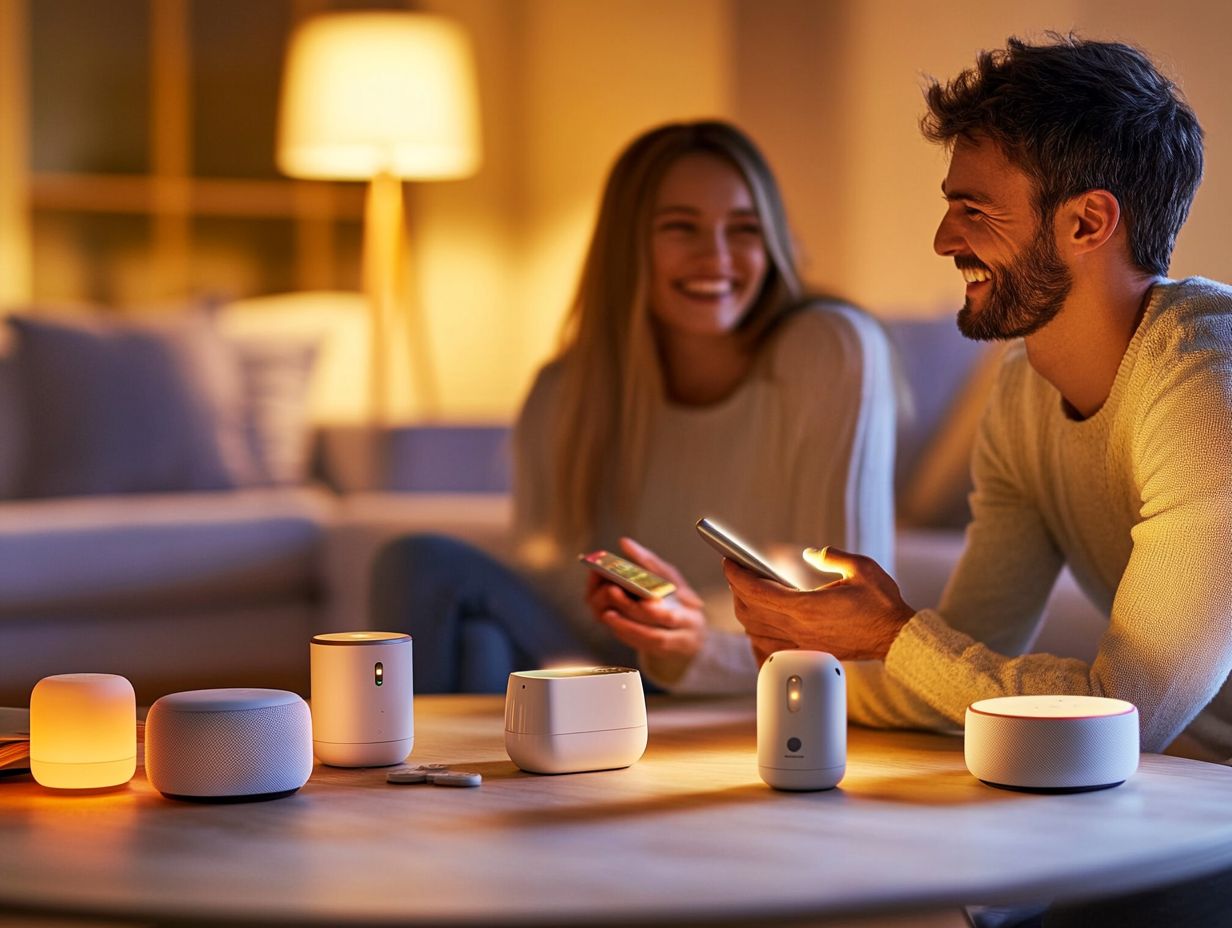
What is a smart home assistant?
A smart home assistant is a voice-activated device that controls various aspects of your home, such as lighting, temperature, and entertainment systems.
Why should I consider choosing a smart home assistant?
A smart home assistant makes your life more convenient and efficient by allowing hands-free control of your devices and automating tasks.
What are the different types of smart home assistants available?
Popular smart home assistants include Amazon Echo, Google Home, and Apple HomePod. Each offers unique features.
How do I choose the right smart home assistant for my needs?
Select a smart home assistant based on your budget. Also, check if it’s compatible with your current devices and meets your feature needs!
Can I control my smart home assistant with my smartphone?
Yes! Most smart home assistants have a mobile app. This lets you control devices from anywhere, even when you’re not home.
What are the privacy concerns with using a smart home assistant?
Some worry about privacy since these assistants are always listening. Research their privacy policies and adjust settings to protect your information!

